아틀라스의 어깨 끝
2025. 8. 6 – 8. 24 | [GALLERIES] GalleryMEME
Eunsi Jo
GalleryMEME is presenting Eunsi Jo’s solo exhibition from the 6th of August to the 24th of August.
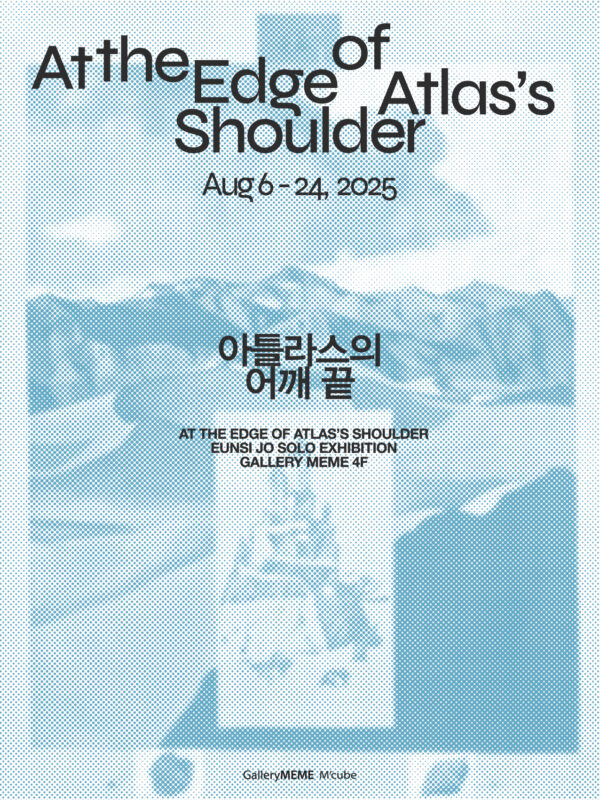
Exhibition Poster
At the threshold where day and night meet, Atlas stands holding up the pillars of the universe. He had taken the side of Cronus and joined the war against the Olympian gods; after their defeat, he was condemned by Zeus to bear the heavens for eternity. The time guarded by Cronus was uncontrollable, fixed, and sequential, a binding force of fate. In contrast, Zeus, who overthrew Cronus and sought to establish a new order, engaged with mutable time and the potential for opportunity within it.
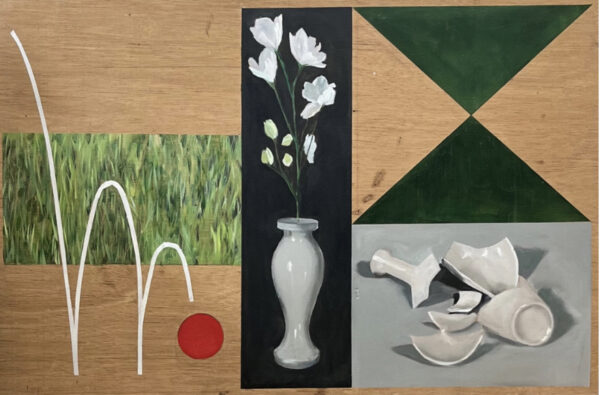
나쁜 생각, 2023, 나무 공, oil on canvas, 밧줄, 가변설치
Atlas, who had fought alongside Cronus in the war known as the Titanomachy, might be seen as a figure clinging to the old world order. Yet, ironically, he came to uphold and sustain the very structure of the new order.
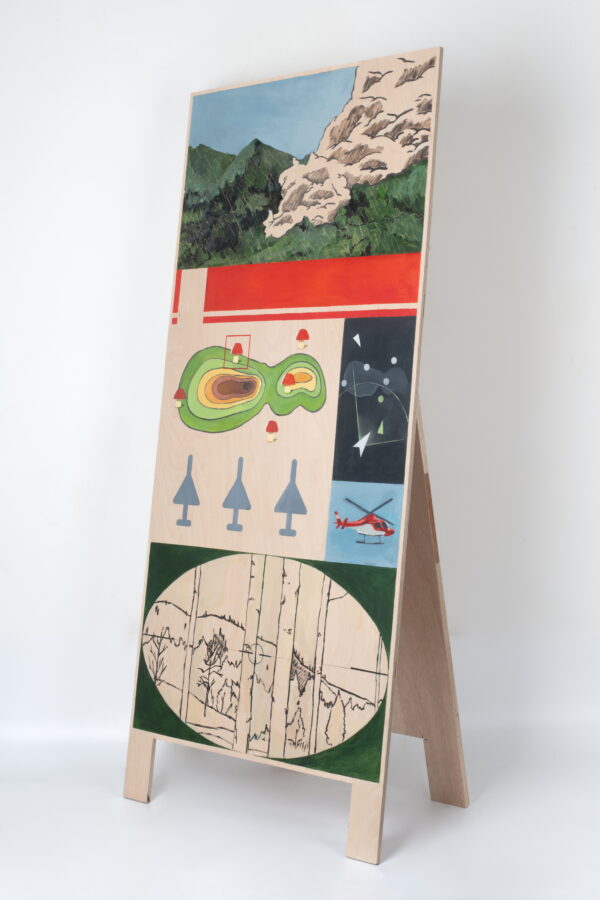
다른 방식으로 보기, 2023, oil on panel, 168.0 x 76.0 x 44.0 cm
In 1585, an image of Atlas was used on the cover of a map collection by Gerardus Mercator. By the 19th century, the term ‘atlas’ had come to refer to books that presented systematic knowledge in diagrammatic form. However, the figure of Atlas referenced by Mercator was not the Titan punished in myth, but the wise ruler of Mauretania, renowned in legend for his deep knowledge of geography and astronomy. Over time, these two Atlases became conflated, and the figure evolved into a cultural symbol of bearing knowledge itself. The image of the Titan, once burdened with divine punishment, was transformed into a metaphor for the visual organization of information.
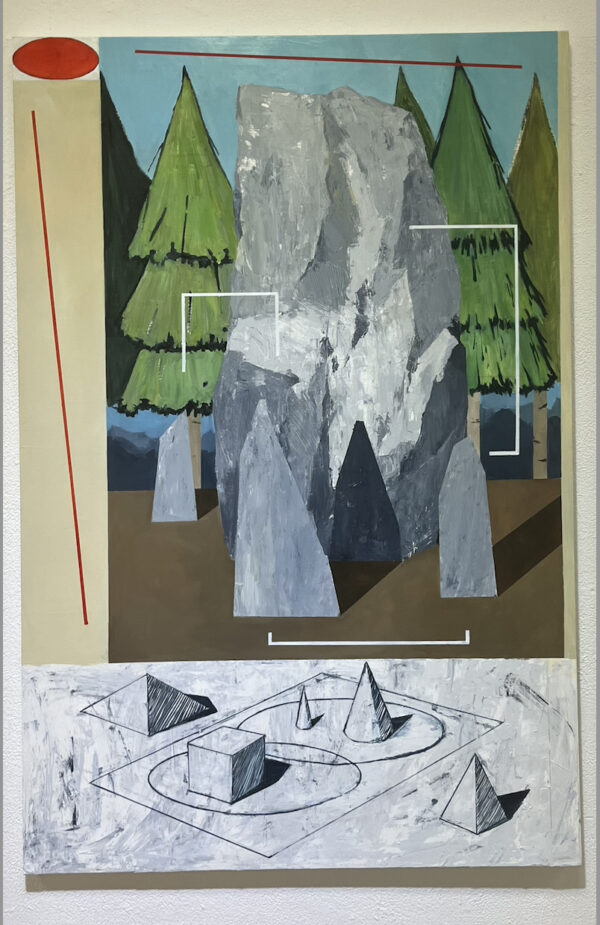
닮음에 대한 연구, 2024, oil on canvas, 97.0 x 145.5 cm
Cultural historian Aby Warburg, for instance, appropriated the figure of Atlas as a visual archive, montaging images and memories, while Georges Didi-Huberman expanded on this idea, adopting Atlas as a mode of visual thought. Though the concept of Atlas originated in myth, its meaning has expanded and been reinterpreted across contexts, layered with new associations over time. … Punishment is bound to bring suffering. And from a more human perspective, perhaps even Atlas broke into a sweat beneath the weight he bore.
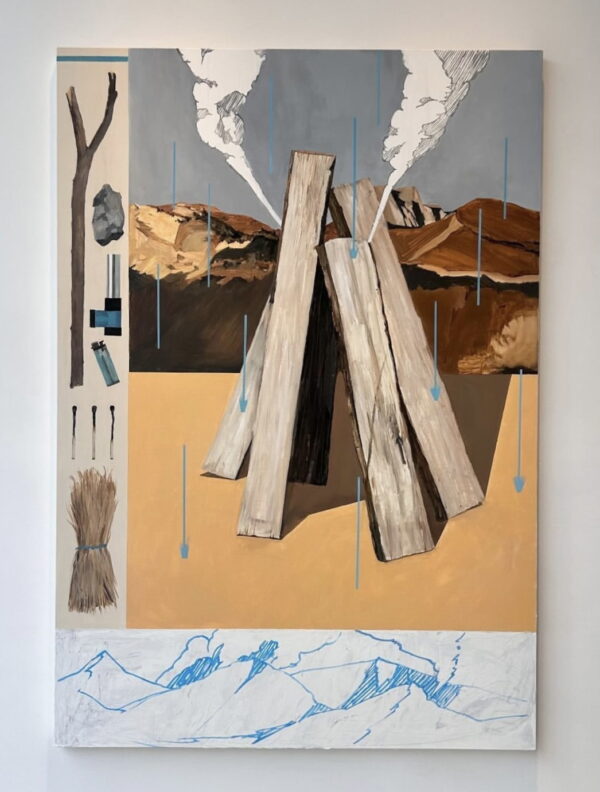
미지근한 충돌, 2024, oil on canvas, 162.2 x 112.1 cm
Over time, that sweat, pooling at the edge of his shoulder, may have caused the heavens to slip ever so slightly, leaving behind fine cracks along its surface.
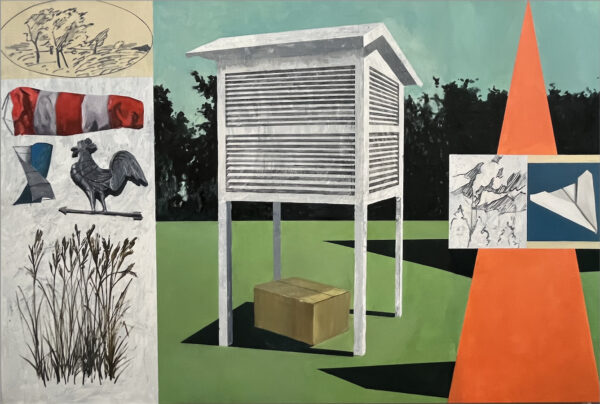
바람의 방향, 2024, oil on canvas, 193.9 x 130.3 cm
Within those fractures, new fissures may have formed—ones that resist resolution within existing systems. Atlas, once a figure of endurance who moved beyond his mythological origins—reshaped through layers of misunderstanding and cultural interpretation into a symbol of structure—has come to be seen as one who opens up new gaps in meaning. Similarly, in this exhibition, Eunsi Jo carefully observes the subtle deviations and dissonances within what appears to be a stable, systematic world.
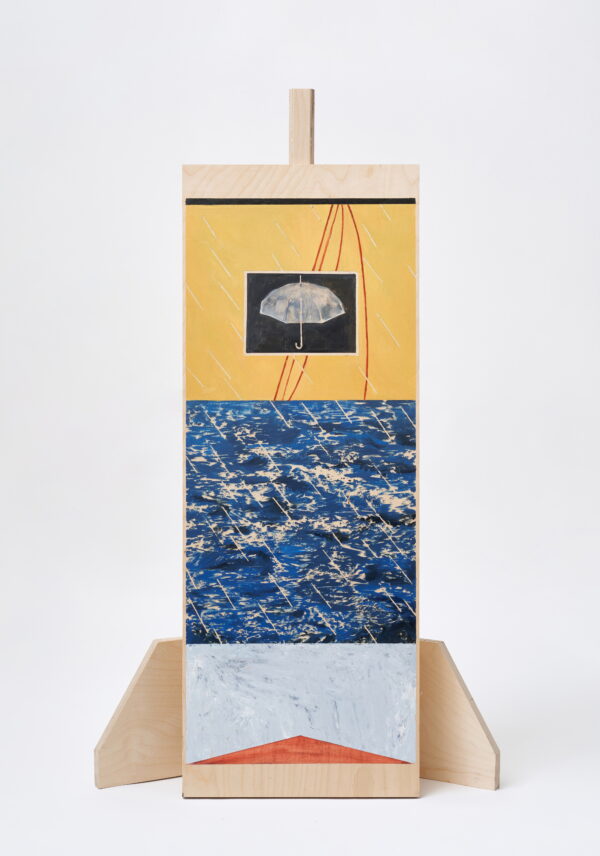
젖는 바다, oil on panel, size varies with installation, 2024
Eunsi Jo’s Atlas prompts sensory reflection through the relationships and repetitions between image, sign, and symbol. At the core of her work lies a structure of interpretation grounded in visual affinities and the slippage between signs and misreadings. In Siblings Below and Siblings Above, seed-or egg-like forms are arranged side by side on a single plane. These two symbols, seed and egg, hint at diverging trajectories of meaning, made especially apparent in the differing ways the seeds develop. By repeatedly arranging forms that resemble one another yet hold entirely different fates, the works suggest the latent presence of multiple timelines and interpretations. In Misunderstanding, a single brown egg stands before a drawing that resembles itself.
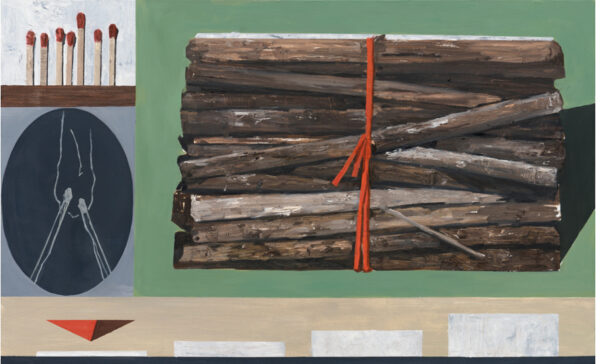
한 단위, 2023, oil on canvas, 80.3 x 130.3 cm
Through the humorous conceit of a brown egg mistaking a white egg sketched onto notebook paper for itself, the work exposes the instability of visual self-recognition—while also alluding to confusion between image and reality, and image and image. Though rooted in representation, the sketchbook, featuring a full carton of eggs, takes the form of a calendar, layering abstract symbols of identity into images and allowing the egg tray, month, and age of thirty to serve as overlapping signs. In Study of the Center, the inevitability of fate coexists with a quiet resistance to it. Canvas hangs on both the front and back of a central steel clothing rack, balanced by a weight suspended below. However, this equilibrium is not quite fixed; it shifts slightly in response to the weight’s position and the canvas’s tension.
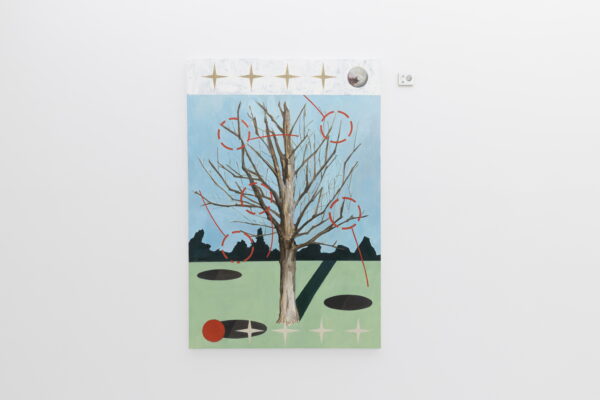
10분의 9, 2025, oil on canvas 145 × 97.5 cm
Originally conceived as part of a set of three hurdle-shaped pieces, each work features symbolic illustrations of opposing proverbs on either side: “Any tree will fall if struck ten times” versus “Like throwing an egg at a rock,” and “Even the lightest load is easier carried together” versus “Too many hands at the helm, and the ship sails off course.” These contradictions reveal that even systems encoded in language rest upon conflicting perspectives.
The coexistence of contradictory proverbs speaks to our lived understanding that there is no single truth that fits every circumstance, no fate entirely fixed. Life rarely follows a straight line of cause and effect. Just as there is a visual affinity between a stone and a mountain of stones, or a desert and a sandcastle, objects that seem related but differ entirely in nature and scale, the balance here appears stable yet remains precarious. In this way, Jo’s hurdle works subtly push back against a fatalistic worldview even as they give it form. Much like the word Atlas has accumulated multiple contexts and derived multiple meanings, Eunsi Jo’s Atlas resists settling into a single narrative or fixed interpretation. Instead, it disperses meaning across multiple trajectories.
Forms like earth, a nest, or a mother bird may share a common origin, but lead to different ends. Her works are grounded in, and often guided by, misrecognition, combining tension and play to humorously destabilize identity and representation. They function as visual mechanisms that delay closure, capturing moments when difference and individuality break away from the whole and offering them up for reflection.
Dahye Kim
GalleryMEME
3, Insadong 5-gil, Jongno-gu, Seoul, Korea
+82 2 733 8877
[GALLERIES] GalleryMEME
- Address
- 3, Insadong 5-gil, Jongno-gu, Seoul, Korea
- Dates
- 2025. 8. 6 – 8. 24
- Artists
- Eunsi Jo











